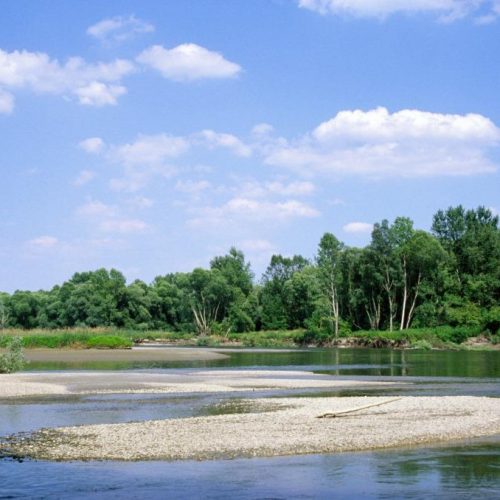News
WWF celebrates conservation succes: World’s first `5-Country Biosphere Reserve´ nominated
Decades of preparatory work pave the way for Europe’s largest river protected area: 930,000 hectares of natural treasures between Austria and Serbia nominated to UNESCO for protection – ‘Amazon of Europe’ becomes an international model region for nature conservation and sustainable regional development.
Vienna/ Zagreb/ Budapest/ Ljubljana/ Belgrade – Last week’s nomination of the world’s first ‘5-Country Biosphere Reserve’ to the UNESCO is a decisive milestone in the establishment of Europe’s largest protected river landscape. “The five countries involved prove that nature conservation can overcome country borders for the benefit of everyone. In the context of the current climate crisis and massive species extinction, protecting the last natural areas has become a matter of our survival”, says WWF project coordinator Arno Mohl, a decades-long activist and advocate of the ‘5-Country Biosphere Reserve Mura-Drava-Danube’, who has been working towards this goal together with many allies for a very long time. The designation by the UNESCO in Paris is expected for summer 2021.
The nominated protected area encompasses 930,000 hectares and has a length of over 700 kilometres. The so-called ‘Amazon of Europe’ begins on the Mura in Styria (Austria) and stretches across four other countries – Slovenia, Hungary, Croatia and Serbia – along the Drava and all the way to the Danube. Until 1989, the river landscape had been torn apart by the Iron Curtain between East and West. The ‘Amazon of Europe’ is home to Europe’s highest density of breeding white-tailed eagle, with more than 140 pairs, as well as endangered species such as the little tern, black stork, otters, beavers and sturgeons. It is also an important resting and feeding place for more than 250,000 migratory birds every year. “This is the most valuable connected river landscape of Central Europe and does not need to shy away from being compared with the Amazon”, explains Arno Mohl.
The region’s identity as well as the livelihoods of almost 900,000 inhabitants living in the biosphere reserve highly depend on the Mura, Drava and Danube lifelines. Intact floodplains protect settlements from floods and ensure clean drinking water supplies, whereas spectacular landscapes enhance the potential for sustainable tourism development. “The new biosphere reserve is an important step away from nature exploitation such as nature destructive hydropower dams on the Mura or sediment extraction projects on the Drava. It paves the way for a sustainable coexistence of people and nature”, says Mohl.
International model region for nature conservation and sustainable regional development
The backbone of the future biosphere reserve is made up of floodplains and wetlands along the river, which are protected under a chain of thirteen local protected areas. The core and buffer zones are surrounded by a transition zone with an area of 650,000 hectares, which are allocated for sustainable agriculture and forestry practices as well as sustainable forms of tourism. 900,000 people call the future ‘5-Country Biosphere Reserve’ their home and place of work.
For more than 20 years, WWF has invested a great deal to achieve a better protection of the rivers’ natural values together with EuroNatur and many local conservation partners in all five countries. Alongside the three WWF offices working in the region (WWF Adria, Austria and WWF Hungary), the ministries and nature protection authorities of Austria, Slovenia, Croatia, Hungary and Serbia as well as MAB (Man and the Biosphere) committees participated in the preparation of the UNESCO nomination dossier.
